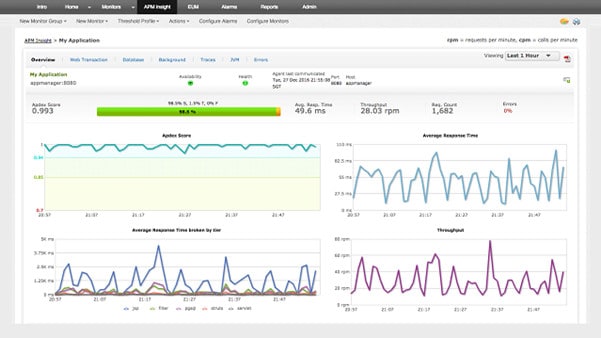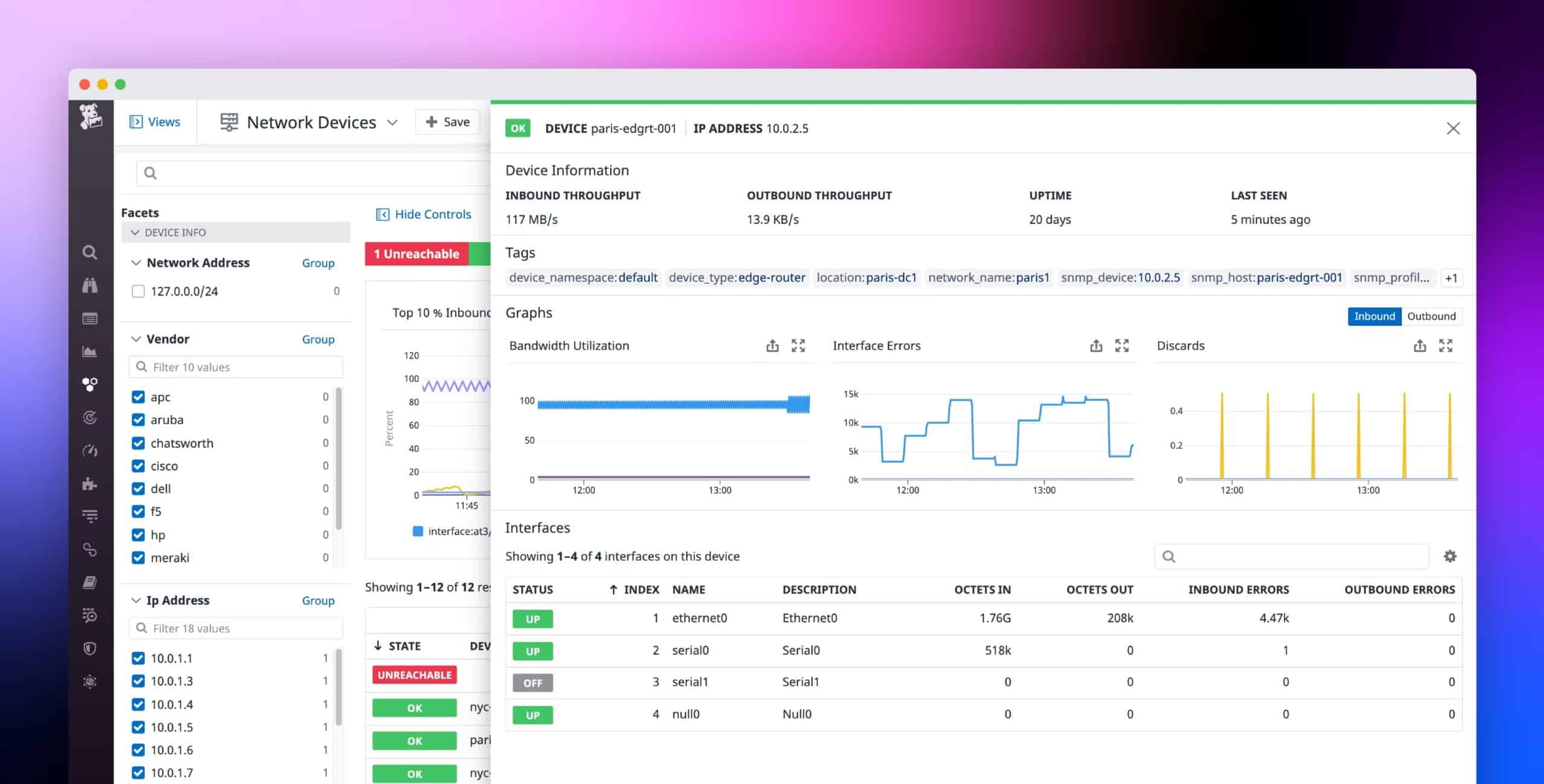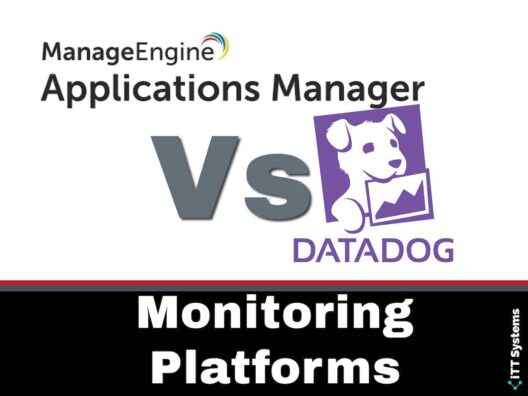The complexity of infrastructure is growing by the day due to many factors such as technological advancements, a changing work culture, wider availability of high-speed Internet, and more. Undoubtedly, these changes have augured well for both organizations and employees, but at the same time, they have made monitoring way more challenging. Imagine how much time and effort would be necessary to monitor every hardware and software component on your network.
This is where monitoring platforms help. These platforms can monitor different devices, network traffic, end-points, port usage, and more. They stay on top of the health and performance of your networks and bring your attention to the existing and potential vulnerabilities, so they can be fixed right away. These monitoring platforms continuously scan your network and its devices for any changes and inform the pertinent ones, along with their contextual information, to enable you to take quick action.
That said, there are many monitoring platforms available today, so choosing one over the other is not easy. In this guide, we will compare two popular platforms – ManageEngine's Applications Manager and Datadog. We will compare them across multiple aspects to help you make an informed decision.
What is ManageEngine Applications Manager?

ManageEngine's Applications Manager is a comprehensive monitoring platform that provides visibility into your network's components and applications. It comes with a host of features that continuously monitor all aspects of your network and raise alerts when one or more components are performing above or below the established threshold values.
This is an intelligent platform that not only alerts you but also provides the surrounding contextual information to help you better understand the problem or situation. All this is provided quickly and seamlessly, with little to no additional overheads for you.
Here's a brief look at the Application Manager's capabilities.
Features
ManageEngine Applications Manager can do the following for your business.
- Provide visibility into your private, public, and hybrid cloud environments.
- Monitor servers to reduce the chances of downtime.
- Identify and solve database issues that impact your network's performance.
- Monitor and troubleshoot application performance issues.
- Handle synthetic transaction monitoring.
- Monitor user experience in real-time.
- Auto discover applications and services.
Thus, these are some of the important features of Applications Manager. Moving on, let's see what Datadog is, and its capabilities.
What is Datadog?

Datadog is a SaaS-based monitoring service that continuously evaluates the performance of your servers, applications, databases, tools, and more. This analytics platform provides in-depth visibility into any stack or app, just about anywhere.
Essentially, it brings together information from different parts of your network into a single console to offer a unified view of your network's performance. At the same time, this helps to get a better context of the errors and enables you to offer a fix quickly.
Features
Here's a look at what Datadog can do for your business.
- Provides complete visibility into applications.
- Comes with advanced automation, monitoring, and instrumentation tools.
- Supports integrations with all common platforms/applications.
- Analyzes log data and provides the context for errors.
- Monitors user experience.
- Generates reports that correlate performance with the overall business impact.
- Comes with interactive dashboards.
Thus, these are some of the salient features of Datadog.
Now that you have an idea of both platforms, let's do a head-to-head comparison across different features to understand which of the two is a better fit for your needs.
ManageEngine Applications Manager vs Datadog – A Detailed Comparison
On-premises vs Cloud
A key difference between the two platforms is their deployment. Applications Manager is an on-premises solution that entails download and installation, both of which are simple and quick, given that it's an agentless platform. Nevertheless, your IT admins will have to download and install Applications Manager locally.
Datadog, on the other hand, is a SaaS platform that requires no downloads or installation whatsoever. Simply subscribe to the service and start using it.
So, which of the two is better? Each of the two platforms is geared for different environments, so both are good in their respective ways. Applications Manager's installation is simple, and this makes it a good choice for on-premises environments. But if you have a predominantly cloud-based infrastructure, Datadog is the choice.
Alarms vs Monitors
Both platforms continuously monitor the network and send alerts and notifications when something is amiss. Applications Manager supports different types of alerts and these are called alarms. These alarms are notifications sent via SMS, email, or any other platform that can be configured. Typically, each alarm tells the concerned employee when there's an issue with the availability or performance of any component. Since ManageEngine uses machine learning and big data, you can be assured that all alarms are relevant.
As you may have guessed, alerts are called Monitors in the Datadog platform. Also, Monitors are slightly different in the kind of information they provide. Datadog uses something called a Watchdog that uses machine learning to identify any problems in your infrastructure. The data collected by Watchdog is combined with the metrics available on a component and this is sent as an alert via email, Slack, and PagerDuty.
The key difference between alarms and monitors is that monitors tend to provide precise and contextual information surrounding the alert, and this helps the admin to take the necessary action. While alarms also provide information, the IT admin has to do some digging to get to the root cause. Though the difference is only marginal, it can have a big impact if you're short on resources to handle these alerts.
Dashboards
Both platforms offer advanced and customizable dashboards that make it easy to understand the state of your infrastructure. However, there are some slight variations in the way information is displayed on both these platforms.
Applications Manager offers four dashboards, and they are:
- Default
- Business View
- Availability
- QoS
Datadog, on the other hand, offers two dashboards and they are:
- Screenboards – They have a free-form layout and can also be used as a storyboard or status board.
- Timeboards – The concerned information is presented on a timeline.
Which of the two is better? The simple answer – depends on what view you want. The Timeboards view, for example, is more conducive for troubleshooting while the Availability and QoS views are well-suited for decision-making.
But one aspect to consider is customization. In Applications Manager, you can use drag and drop tools, and this makes customization highly intuitive. Datadog, on the other hand, requires more time and effort for customization but can give you exactly the information you want.
Pricing
The price of Applications Manager depends on two factors – the number of users who will be accessing the dashboards and the number of aspects (memory, CPU usage, bandwidth, speed, etc) that you want to monitor in a device. This pricing model offers a lot of flexibility for users. Further, you can buy a perpetual or an annual license, and the latter includes support fees as well.
Moving on to Datadog, there are multiple pricing options to provide granular control over your spending. You can choose from more than 15 different pricing categories based on your needs. All the prices are billed annually.
Again, when you compare the two platforms, you'll see that the pricing is flexible and highly customizable. So, the winner depends on your budget, what you want to monitor, the number of users, and other pertinent factors.
Miscellaneous
Some minor differences include the support for different operating systems. For example, ManageEngine supports only Windows and Linux while Datadog supports a wider range of operating systems including Mac OS X, as it's cloud-based.
Another minor difference is that ManageEngine also offers email and help desk support, in addition to phone and knowledge base. Datadog doesn't offer phone support but offers online chat.
Thus, these are some of the major differences between the two platforms.
Verdict
As you can see, one platform is not necessarily better than the other because the features are similar in many aspects. However, there are a few differences between the two platforms that make one better suited for some environments.
In general, if a big part of your business is cloud-based, Datadog is your choice. Similarly, if you use non-Windows and non-Linux operating systems or if you're an individual looking to add some monitoring capabilities to your infrastructure, Datadog is your choice. This cloud-based platform ensures that you don't have to allocate resources for setup and monitoring, and can be ideal for startups and SMBs that are on a budget. It can also work well for large enterprises that are looking to migrate their monitoring to the cloud.
On the other hand, if you're looking for an extensive monitoring solution for your on-premises environment and have the resources to handle them, go for Applications Manager. Its flexible pricing model, especially the option to buy a perpetual license, is a big draw.
Final Thoughts
In all, ManageEngine Applications Manager and Datadog are comprehensive platforms for monitoring your infrastructure. However, there are a few differences in their capabilities and deployment, so make sure to choose the one that best fits your needs.
Check out our other comparison guides too.




